EMOTIONS & FEELINGS, are they the same? // EMOCIONES & SENTIMIENTOS, ¿son iguales? [ENG-ESP]
My dear emotional companions.
Delighted to be able to be here reading us again. I wanted to touch on this point today. I believe that this subject, in spite of being simple, is elementary because it continues helping us to recognize what happens in our mind so that emotions or feelings are generated. In this way we continue to know ourselves.
Before we go on, we want to remind you of the first rule of the community: the first word of the title must be the name of the feeling or emotion you are dealing with. We ourselves, as creators of the community, must be the first to execute them. However, as part of the dynamics, some of our periodic posts will be informative and general, to provide general aspects about emotions and feelings. Therefore, we propose the labels EMOTIONS and FEELINGS for when you want to talk in this same tone. Remember to put it first in the title. Let's get started!
In the past, the terms "emotions and feelings" were used interchangeably. In fact, many of us grew up hearing or commonly using them as equals. However, they are not. Here I share with you the concepts, what they are and examples; so you can see their main differences in a very simple way.
Mis queridos compañeros emocionales.
Encantados de poder estar aquí leyéndonos nuevamente. Quería hoy tocar este punto. Creo que este tema, a pesar de ser sencillo, es elemental pues nos sigue ayudando a reconocer lo que pasa en nuestra mente para que se generen emociones o sentimientos. Así seguimos conociéndonos a nosotros mismos.
Antes de seguir, queremos recordar la primera regla de la comunidad: la primera palabra del título debe ser el nombre del sentimiento o emoción del cual estés tratando. Nosotros mismos, como creadores de la comunidad, debemos ser los primeras en ejecutarlas. No obstante, como parte de la dinámica, algunos de nuestros post periódicos serán informativos y generales, para aportar aspectos sobre las emociones y sentimientos. Por eso, proponemos las etiquetas EMOCIONES y SENTIMIENTOS para cuando quieran hablar en éste mismo tono. Recuerda que debes ponerlo de primero en el título.
Ahora sí. ¡Empecemos!
Anteriormente las terminologías “emociones y sentimientos” se usaban indistintamente. Incluso, muchos de nosotros crecimos escuchándolas o usándolas comúnmente como iguales. Sin embargo, no lo son. Acá te comparto los conceptos, cuales son y ejemplos; así podrás ver sus principales diferencias de una manera muy sencilla.
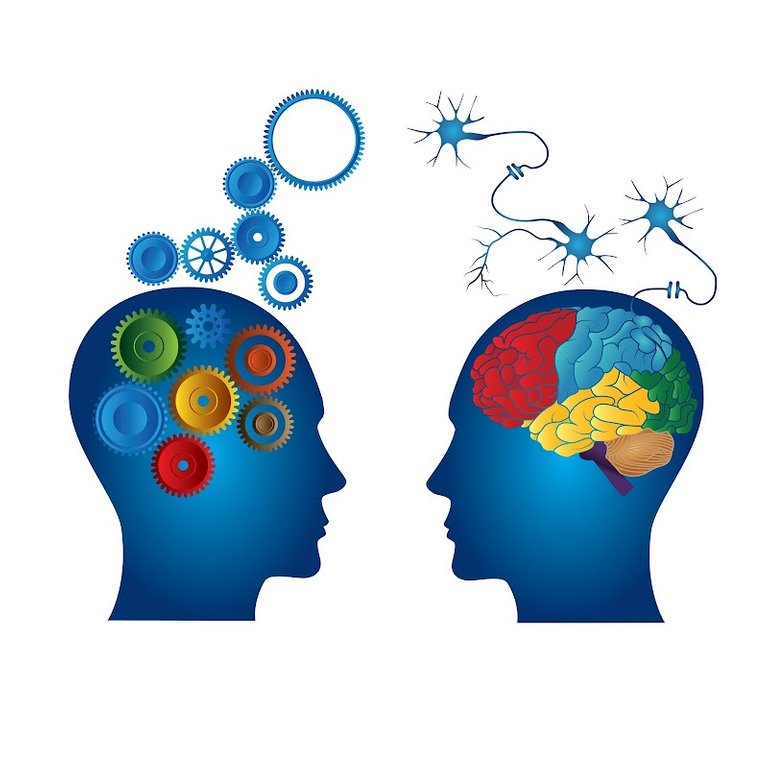
ENGLISH VERSION
Emotion
Emotions are unconscious reactions to certain stimuli. That is, it is an immediate response and without thought to something we see or feel. They are said to be psychophysiological because we feel them internally and they are immediately reflected in our body or even on our face. Sometimes they help in making quick decisions such as running away or staying.
Some say there may be as many as 6,000 different emotions. However, other experts say the basic or primary ones are:
Happiness
Surprise
Anger
Sadness
Disgust
Fear
It is true that others can be derived from these, but I will explain that later.
Experts vary in their opinion of how long an emotion lasts. Some say seconds, others say 10 minutes, and still others say up to 25 minutes. The important thing to know in this matter is that emotions, despite being intense, last very little. Understanding this nourishes us and helps us identify why we feel the way we do and how normal it is to feel this way.
Example:
There are several that allow us to distinguish emotions from feelings; but this I believe is the most common:
You see or perceive that the animal you don't like (cockroach, mouse, toad, etc.) is near, what do you immediately feel? disgust? fear? how does it reflect on your body or face? do you freeze or run? There's the emotion!
SPANISH VERSION
Emociones
Las emociones son reacciones inconscientes a ciertos estímulos. Es decir, es una respuesta inmediata y sin pensamiento a algo que vemos o sentimos. Se dice que son psicofisiológicas porque las sentimos internamente y de inmediato se reflejan en nuestro cuerpo o aunque sea en nuestra rostro. A veces ayudan a tomar decisiones rápidas como huir o quedarse.
Según dicen algunos, puede haber hasta 6.000 emociones diferentes. Sin embargo, otros expertos afirman que las básicas o primarias son:
Felicidad
Sorpresa
Ira
Tristeza
Asco
Miedo
Es verdad que de éstas pueden derivarse otras, pero eso lo explico más adelante.
Expertos varían en su opinión de cuánto dura una emoción. Unos dicen que segundos, otros 10 minutos y otros más afirman que hasta 25 minutos. Lo importante en este asunto es saber que las emociones a pesar de ser intensas, duran muy poco. Entender esto nos nutre y ayuda a identificar porque nos sentimos como nos sentimos y hasta donde es normal sentirnos así.
Ejemplo:
Hay varios que nos permiten distinguir las emociones de los sentimientos; pero este creo que es el más común:
Ves o percibes que está cerca el animal que no te agrada (cucaracha, ratón, sapo, etc) ¿Qué sientes de inmediato? ¿Asco? ¿Miedo? ¿Cómo se refleja en tu cuerpo o rostro? ¿Te paralizas o corres? ¡Ahí está la emoción!
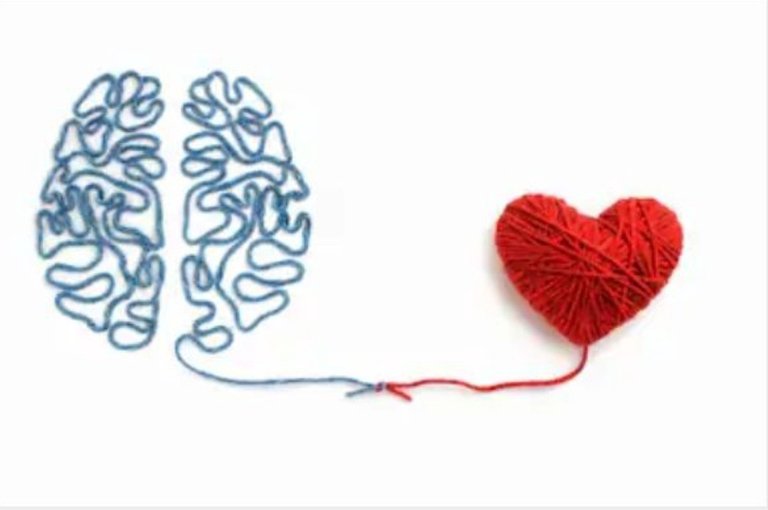
Feeling
On the other hand, feelings is emotion plus thought. They are subjective, that is, with thought we give it our concept, we label it. When we recognize an emotion and *apply to it memories, background, opinions... we have the feeling. Of these there are countless. Such as: love, resentment, guilt, compassion, dislike, worry, loneliness, affection... in short..
They are of indeterminate duration, because they will last as long as we continue to apply thought to them. And, obviously, if we go on and on thinking about this matter and adding more qualifiers, what started as an emotion and went through a feeling becomes a mood, and this, my friends, can make us sick (which we will talk about in another post).
So it is very good to know that there is no feeling without emotion and that even that feeling can awaken other emotions and we fall into an emotional circle.
Example:
My cousin did not invite me to her wedding. My first reaction may be surprise. I lower my head, raise my eyebrows (emotion) "Why didn't she invite me?" "What's wrong with her?" "That's because the groom doesn't like me, he can't stand me, I knew this would happen because the other time..." (emotion+thought) Result: "Angry I will send her a text to put her in her place" (feeling) "And when I see her again I won't even talk to her" (there may be an emotion: anger). Now every time this person sees her cousin, boyfriend, whoever reminds her of this or mentions it to her, how will her mood be? (emotional state)
This, although it is an example I made up, shows how far our emotions and feelings can take us if we manage them correctly.
Sentimiento
Por otro lado, los sentimientos es la emoción más el pensamiento. Son subjetivos, es decir, con el pensamiento le damos nuestro concepto, lo etiquetamos. Cuando reconocemos una emoción y le aplicamos recuerdos, antecedentes, opiniones… tenemos el sentimiento. De estos hay incontables. Como: amor, rencor, culpa, compasión, desagrado, preocupación, soledad, afecto… en fin.
Son de duración indeterminada, pues durará tanto como le sigamos aplicando pensamiento. Y, obviamente, si seguimos y seguimos pensando en ese asunto y añadiéndole más calificativos, lo que empezó como una emoción y pasó por un sentimiento se convierte en un estado de ánimo. Y esto amigos, puede llegar a enfermarnos (lo que hablaremos en otro post).
Así que es muy bueno saber que no hay sentimiento sin emoción y que incluso ese sentimiento puede despertarnos otras emociones y caemos en un círculo emocional.
Ejemplo:
Mi prima no me invitó a su boda. Mi primera reacción puede ser de sorpresa. Bajo la cabeza, subo las cejas (emoción) “¿Por qué no me invitó?” “¿Qué le pasa?...” “Eso es que le caigo mal al novio, no me soporta, ya sabía yo que esto pasaría porque la otra vez…” (emoción+pensamiento) Resultado: “Enojada le enviaré un texto para ponerla en su lugar” (sentimiento) “Y cuando la vuelva a ver ni le hablaré” (puede haber una emoción: ira). Ahora esta persona cada vez que vea a su prima, al novio, a quien sea que le recuerde esto o se lo mencione, ¿Cómo estarán sus ánimos? (estado emocional)
Esto, aunque es un ejemplo que me inventé, demuestra hasta donde nos pueden llevar nuestras emociones y sentimientos si nos los gestionamos correctamente.
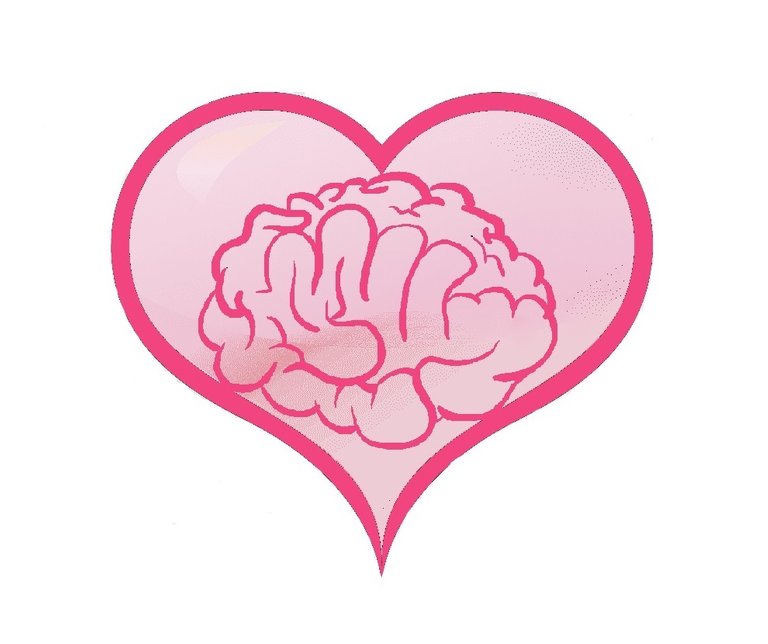
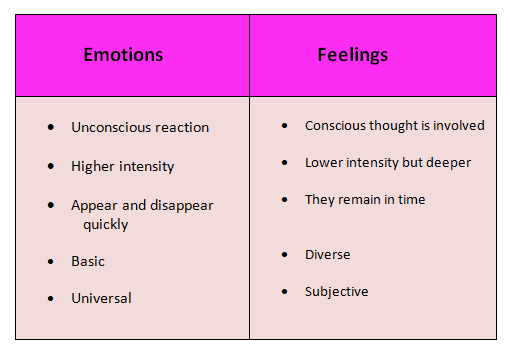
That is why, my friends, now when we come across any circumstance in life, whatever it may be, we can exercise our ability to distinguish what it is we are feeling. Is it an emotion or a feeling?
The idea, in no way, is to make judgments. Not even to ourselves. Everything is part of that knowledge that, as I said at the beginning, builds us as integral beings. Progressively, we want to keep on going through each other with understanding.
We will continue to read each other, comrades. ¡Hugs! ❤️
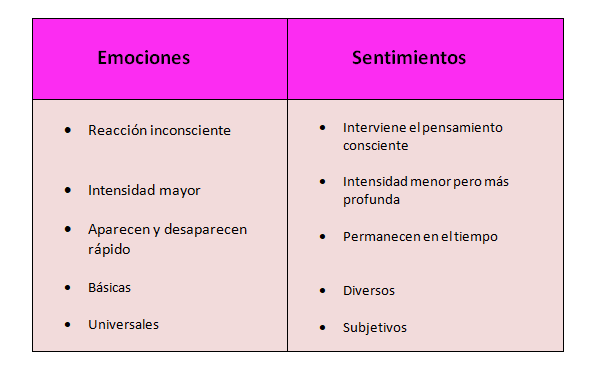
Por eso compañeros, ahora cuando en la vida nos topemos con alguna circunstancia, cualquiera que sea, podremos ir ejercitando la capacidad de distinguir que es lo que estamos sintiendo. ¿Es una emoción o un sentimiento?
La idea, de ninguna manera, es hacer juicios. Ni siquiera a nosotros mismos. Todo es parte de ese conocimiento que, como dije al principio, nos construye como seres integrales. Progresivamente queremos seguir transitándonos con comprensión.
Nos seguiremos leyendo compañeros. ¡Abrazos! ❤️

El logo es creación propia. Banner creado en Canvas
Este es un tema con muchas aristas.
Saludos
¡Síii! Y apasionante a la vez. Podemos hablar largo y tendido de éste hermoso tema. Nos encanta sus interacciones, y así vamos creando comunidad. Gracias por dejar tu huella en el post @mercmarg
Un post muy completo que ayuda a aclarar dudas y a comprendernos mejor. Muchas gracias 😊
Muchísimas gracias @damarysvibra 🤗 nos agrada que te haya gustado la información compartida con tanto cariño. Esperamos leerte pronto. Estamos seguros de que lo que nos compartas nos hará vibrar en positivo 🙇🏻♀️
The rewards earned on this comment will go directly to the person sharing the post on Twitter as long as they are registered with @poshtoken. Sign up at https://hiveposh.com.
Congratulations @hive-102879! You have completed the following achievement on the Hive blockchain and have been rewarded with new badge(s):
Your next target is to reach 200 upvotes.
Your next target is to reach 100 comments.
You can view your badges on your board and compare yourself to others in the Ranking
If you no longer want to receive notifications, reply to this comment with the word
STOPTo support your work, I also upvoted your post!
Check out the last post from @hivebuzz:
Excelente manera de discriminar los temas, las ilustraciones hacer ver con claridad aquello que puede ser confuso. Muchas gracias por el valioso contenido. Saludos.
Me encantó esta información,muchas gracias.
Que bueno querida compañera @marbrym 🤗 Nos agrada que te guste 🌟
Bueno, técnicamente no son lo mismo. Pero también dependerá del prisma con el que se analice. Me explico. Las emociones son reacciones que aprendemos desde muy pequeños, pero que al mismo tiempo son altamente reprimidas. Por ejemplo, la alegría o la tristeza pueden ser permitidas, pero, ¿la ira? Por lo general, esta última es bastante censurada; por tanto reprimida. Los sentimientos son las preconcepciones que hemos adquirido, a través de nuestra escala de valores, entorno social, personalidad pero sobre todo, mediante nuestro modo de compartir en sociedad. Todo bajo reglas no escritas, como la capacidad de amar. Sí, la poseemos, pero bajo normas pre establecidas: como la fidelidad, la monogamia y el matrimonio. Ojo, doy estos ejemplos, por solo nombrar los más comunes. Excelente post.
Wonderful post